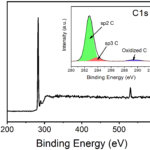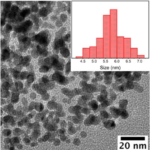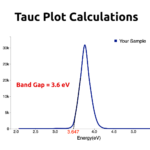Iron Oxide Nanoparticles Synthesis – (Fe2O3) by using Iron Chloride and Urea via Chemical Reduction Method followed by Thermal Treatment
Cite This in Your Publication
Iron Oxide Nanoparticles Synthesis – (Fe2O3) by using Iron Chloride and Urea via Chemical Reduction Method followed by Thermal Treatment - InstaNANO. https://instanano.com/all/nanomaterial-synthesis/metal-oxide/iron-oxide-nanoparticles-2/ (accessed May 3rd, 2024).
Iron Oxide Nanoparticles Synthesis – (Fe2O3) by using Iron Chloride and Urea via Chemical Reduction Method followed by Thermal Treatment - InstaNANO. https://instanano.com/all/nanomaterial-synthesis/metal-oxide/iron-oxide-nanoparticles-2/ (accessed May 3rd, 2024).
Iron (III) Oxide (Fe2O3) Nanoparticles Synthesis by using Iron Chloride as precursor and Urea as reducing agent via Chemical Reduction Method followed by Thermal Treatment.
-
CHECK LISTIron(III) chloride (FeCl3), Urea (CH4N2O), Deionized Water, RB Flask, Dropper, Magnetic Stirrer with Temperature option, Centrifuge, Furnace.
-
STEP 1.Take 1g Iron(III) chloride in 50ml of water and set reflux temperature to 80°C.
-
STEP 2.Take 1g Urea in 50ml of water in another RB flask at room temperature
-
STEP 3.Add Urea solution (prepared in step-2) into Iron Chloride solution (prepared in step-1) and keep the reflux temperature to 80°C for 2 hours.
-
STEP 4.Add Zinc Nitrate solution (prepared in step-3) slowly in Aloe Vera gel (prepared in step-2) by dropper.
-
STEP 5.Filter out the precipitate, wash it with deionized Water and Ethanol several times to remove the unwanted impurities.
-
STEP 6.After washing and drying. Obtained powder is Calcined at 650°C for 2 hours to form the Iron Oxide (Fe2O3) Nanoparticles.
-
RESULTSSize of the formed Iron (III) Oxide (Fe2O3) Nanoparticles should be around 50 nanometers. Size can be reduced upto 15nm by using Microwave heating (read Factors Affecting Synthesis for more information).
-
Factors Affecting SynthesisConcentration of Urea: Higher the concentration of Urea smaller the size of Nanoparticles.
Calcination Conditions: It was observed that if powder is calcined in Microwave for 5 minutes instead of conventional heating then size of the Nanoparticles reduces to 15 nanometers. -
NOTE: All the experiments should be done under the guidance of lab Incharge; and proper lab safety instructions.

























